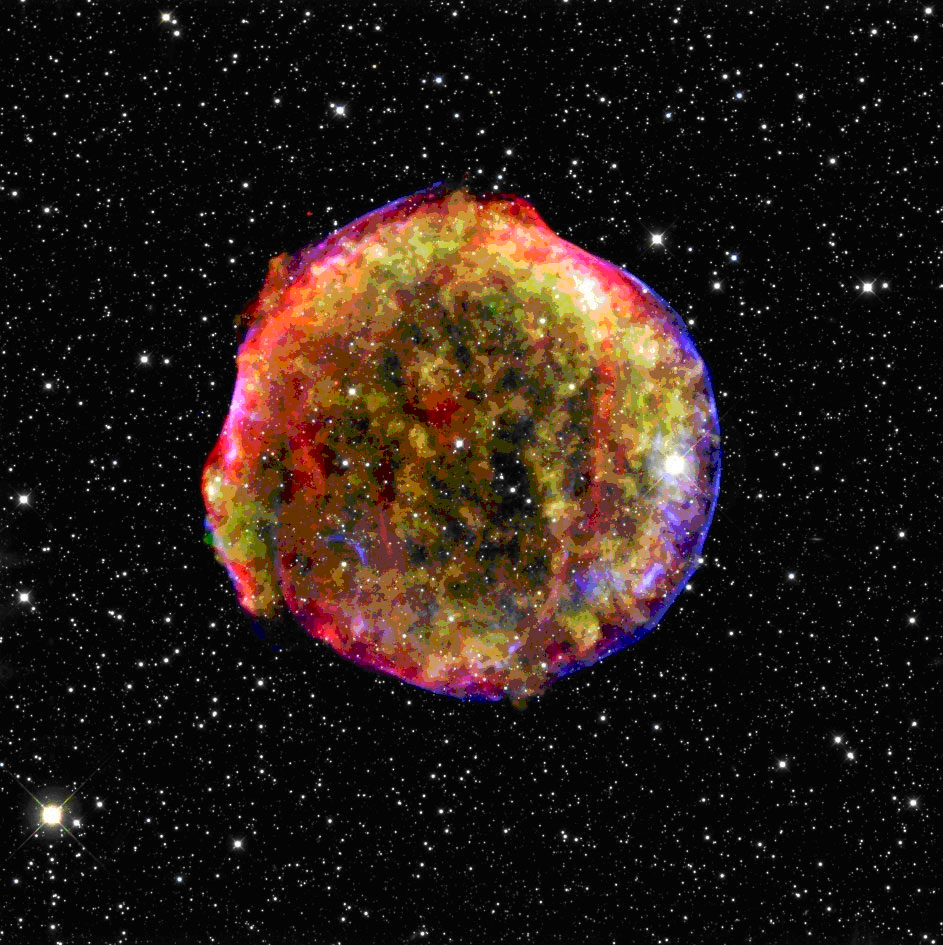[/caption]
Just over three years ago, I wrote a blog post commemorating the 50th anniversary of one of the most notable papers in the history of astronomy. In this paper, Burbidge, Burbidge, Fowler, and Hoyle laid out the groundwork for our understanding of how the universe builds up heavy elements.
The short version of the story is that there are two main processes identified: The slow (s) process and the rapid (r) process. The s-process is the one we often think about in which atoms are slowly bombarded with protons and neutrons, building up their atomic mass. But as the paper pointed out, this often happens too slowly to pass roadblocks to this process posed by unstable isotopes which don’t last long enough to catch another one before falling back down to lower atomic number. In this case, the r-process is needed in which the flux of nucleons is much higher in order to overcome the barrier.
The combination of these two processes has done remarkably well in matching observations of what we see in the universe at large. But astronomers can never rest easily. The universe always has its oddities. One example is stars with very odd relative amounts of the elements built up by these processes. Since the s-process is far more common, they’re what we should see primarily, but in some stars, such as SDSS J2357-0052, there exists an exceptionally high concentration of the rare r-process elements. A recent paper explores this elemental enigma.
As the designation implies, SDSS J2357-0052’s uniqueness was discovered by the Sloan Digital Sky Survey (SDSS). The survey uses several filters to image fields of stars at different wavelengths. Some of the filters are chosen to lie in wavelength ranges in which there are well known absorption lines for elements known to be tracers of overall metallicity. This photometric system allowed an international team of astronomers, led by Wako Aoki of the National Astronomical Observatory in Tokyo, to get a quick and dirty view of the metal content of the stars and choose interesting ones for followup study.
These followup observations were done with high resolution spectroscopy and showed that the star had less than one one-thousandth the amount of iron that the Sun does ([Fe/H] = -3.4), placing it among the most metal poor stars ever discovered. However, iron is the end of the elements produced by the s-process. When going beyond that atomic number, the relative abundances drop off very quickly. While the drop off in SDSS J2357-0052 was still steep, it wasn’t near as dramatic as in most other stars. This star had a dramatic enhancement of the r-process elements.
Yet this wasn’t exceptional in and of itself. Several metal poor stars have been discovered with such r-process enhancements. But none coupled with such an extreme deficiency of iron. The implication of this combination is that this star was very close to a supernova. The authors suggest two scenarios that can explain the observations. In the first, the supernova occurred before the star formed, and SDSS J2357-0052 was formed in the immediate vicinity before the enhanced material would be able to disperse and mix into the interstellar medium. The second is that SDSS J2357-0052 was an already formed star in a binary orbit with a star that became a supernova. If the latter case is true, it would likely give the smaller star a large “kick” as the mass holding the system would change dramatically. Although no exceptional radial velocity was detected for SDSS J2357-0052, the motion (if it exists) could be in the plane of the sky requiring proper motion studies to either confirm or refute this possibility.
The authors also note that the first star with somewhat similar characteristics (although not as extreme), was discovered first in the outer halo where the likelihood of the necessary supernova occurring is low. As such, it is more likely that that star was ejected in such a process establishing some credibility for the scenario in general, even if not the case for SDSS J2357-0052.


Wow, does this supernova remnant already have a nickname
Otherwise hereby I would like to claim the name “passionfruit”.
Sorry if this is not enough scientific, but I am not joking. I saw this picture and without knowing what it exactly was or reading a single letter the first thing I thought was: “Hey, that thing just looks like a passionfruit cut in half”.
Do more people agree, because perhaps than we can try to spread this name:
Have you read the story on Universe Today about the passionfruit….? 🙂
At the second paragraph, there’s a double “which” between the second and third lines.
@IVAN3MAN:
I have your coat, please see yourself out.
IVANMAN, there’s number in your name between N and M.
Astronomovie: It’s name is the “Tycho Supernova Remnant” as indicated by the caption.
If it didn’t have a name that was descriptive though, I think “SNR Passionfruit” would be good. After all, many nebulae and other objects are given descriptive names (ex. Eagle nebula). Heck. Constellations are given names and they often don’t look anything like what they’re supposed to.
@Jon: No kidding. I spent a good part of my formative years blissfully unaware that the Big Dipper was actually the hindquarters of a giant bear in the sky. :^D
“Constellations are given names and they often don’t look anything like what they’re supposed to.”
I think the only constellations that really live up to their names are Triangulum and Triangulum Australe. 🙂
@Jon Hanford: Eskimo is also really nice, North America too…
Orion looks like a man wearing a belt, and I could see the Hyades looking like a bull.
I saw that UT artice about the Passionfruit Nebula! 🙂